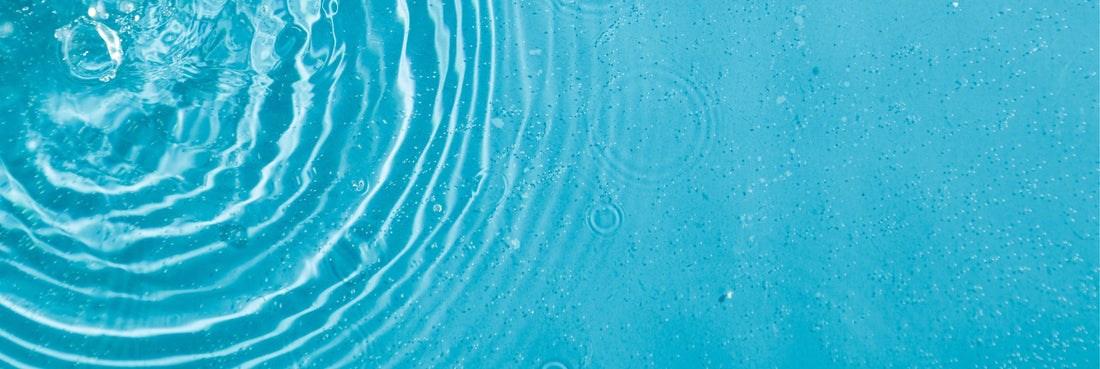
Skincare for Oily Skin: A Complete Science-Backed Ritual
Share
Oily skin is often misunderstood. It’s one of the five primary skin types—alongside normal, dry, combination, and sensitive—and like all skin types, it simply needs the right care, not overcorrection. Many people with oily skin turn to harsh cleansers or drying products in an attempt to eliminate shine, only to find their skin becomes even more reactive.
Understanding your skin type is essential for creating a ritual that works with your skin rather than against it. In this guide, we’ll explore what causes oily skin, how to care for it, and how to build a balanced, effective skincare ritual for oily skin that supports long-term health and clarity.
Curious about all five skin types? Read our full guide Understanding Skin Types: How to Care for Yours Effectively.
What Causes Oily Skin?
Oily skin is defined by overactive sebaceous glands, which produce excess sebum (oil). While sebum is essential for protecting and moisturizing the skin, too much can lead to clogged pores, shine, and congestion.
What contributes to oily skin?
- Genetics: If oily skin runs in your family, you're more likely to experience it yourself.
- Hormones: Androgens, which regulate oil production, fluctuate with age, stress, and menstrual cycles.
- Climate: Heat and humidity increase oil production.
- Over-cleansing or harsh products: These can strip the skin, triggering more oil as a defense mechanism.
- Dehydration: When skin lacks water, it may compensate by producing more oil.
A healthy skin barrier and microbiome play key roles in balancing oil production. The goal isn’t to remove oil entirely, it’s to support the skin in regulating it naturally.

Key Principles for Skincare for Oily Skin
Before choosing products, it’s important to understand a few essential principles that shape a successful oily skin ritual. The first is balance—harsh ingredients that aim to strip oil can actually damage the skin barrier and lead to even more oil production as the skin tries to compensate. Hydration is equally critical. While it may seem counterintuitive, dehydrated skin often responds by producing excess oil to make up for water loss. Finally, consistency matters. A gentle, regular ritual helps calm inflammation and gradually regulate oil levels over time. With the right approach and ingredients, your skin can feel balanced, supported, and clear—without becoming overly matte or excessively shiny.
Skincare Ritual for Oily Skin
A structured, minimal ritual is often best for oily skin – fewer steps, but high-performance ingredients.
Morning Ritual:
- Gentle gel cleanser – Removes excess oil without disrupting the barrier.
- Lightweight antioxidant serum – Niacinamide or vitamin C supports oil control and protects against free radicals.
- Oil-free or non-comedogenic moisturizer – Hydrates without clogging pores.
- Broad-spectrum SPF – Daily protection is essential for all skin types.
Evening Ritual:
- Double cleanse if needed (especially if wearing SPF or makeup).
- Peptide serum – A targeted step to calm inflammation, support the skin barrier, and promote a smoother texture.
- Lightweight moisturizer or gel-based hydrator – Locks in hydration overnight.

Ingredients to Look For (and Avoid)
Choosing the right ingredients is key to building an effective skin ritual for oily skin.
Helpful Ingredients:
- Niacinamide: Regulates oil production and strengthens the skin barrier.
- Peptides: Help repair and rebalance without adding weight.
- Zinc PCA: Controls sebum and offers antibacterial benefits.
- Salicylic Acid (BHA): Gently exfoliates inside pores to prevent buildup.
Ingredients to Avoid:
- Alcohol-heavy toners: Overdry the skin and damage the barrier.
- Heavy or occlusive oils: Can clog pores in oily or acne-prone skin.
- Over-exfoliation: Stick to 1–2 times per week to avoid barrier damage.
How Peptides Benefit Oily Skin
Peptides are a powerful tool in skincare for oily skin, offering targeted repair without heaviness. In GLOW, each peptide was selected for its gentle yet effective role in restoring balance:
- GHK-Cu (Copper Tripeptide-1): Reduces inflammation and encourages skin regeneration.
- Palmitoyl Tripeptide-1 & Palmitoyl Tetrapeptide-7: Help firm the skin and improve its strength over time.
- Snap-8: Softens expression lines and reduces skin tension without clogging pores.
- Hyaluronic Acid: Provides deep hydration without contributing to oiliness or congestion.
Learn more about the peptides in GLOW and how they support different skin concerns.

Lifestyle Considerations
Topical care is essential, but maintaining healthy, balanced skin also depends on the choices you make beyond your skincare ritual. Oily skin is influenced not just by what you apply, and supporting your skin from within can make a visible difference over time, especially when paired with a consistent skincare ritual. These daily habits play a key role in helping regulate oil production and reduce congestion:
- Hydrate: Even oily skin needs water—internally and topically.
- Eat a balanced diet: Omega-3s, antioxidants, and low-glycemic foods support skin health.
- Sleep well and manage stress: Both directly influence hormonal oil production.
- Use clean pillowcases and remove makeup gently: These simple steps help prevent clogged pores and irritation.
Oil is not a flaw, it’s a vital part of your skin’s ecosystem. The key is to support regulation, not fight your skin’s natural functions. A thoughtful, consistent skincare ritual for oily skin helps restore harmony, reduce excess shine, and protect your barrier without stripping or overcorrecting.
GLOW’s peptide-powered formula supports skin from within, offering targeted hydration, barrier repair, and inflammation control—making it the ideal serum for oily skin. When your skin feels balanced and supported, oil becomes part of the glow, not the problem.